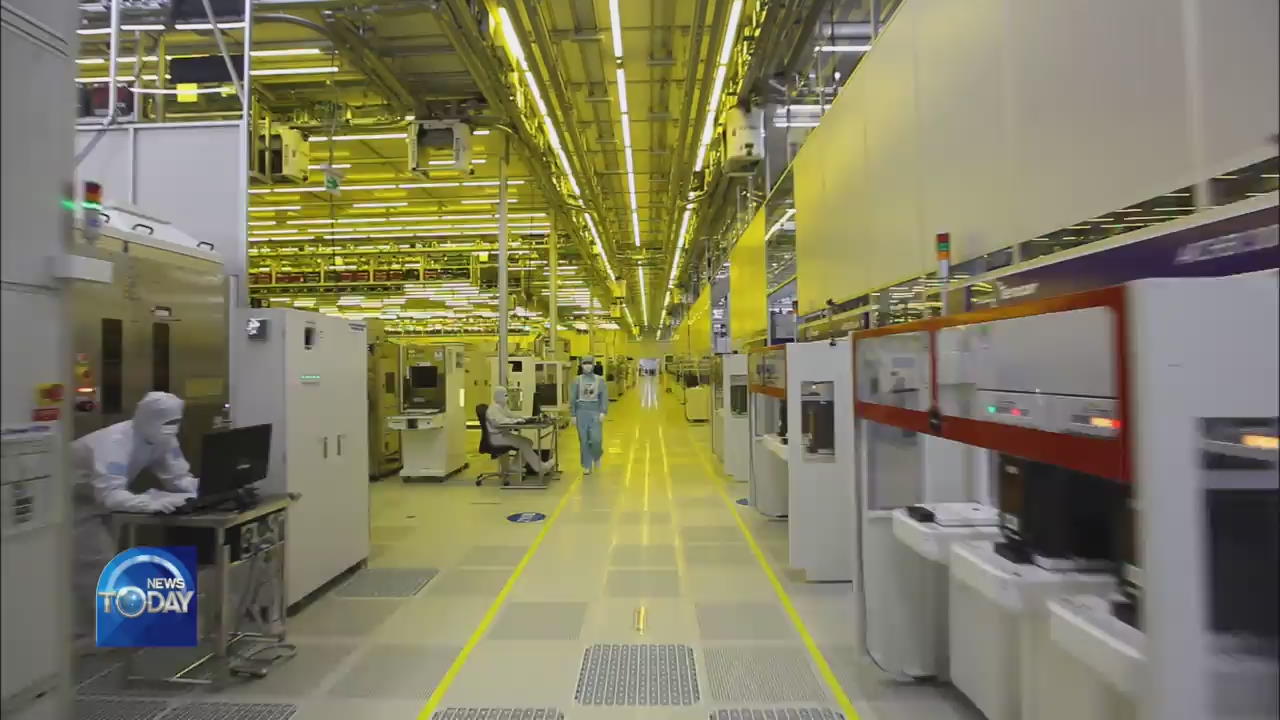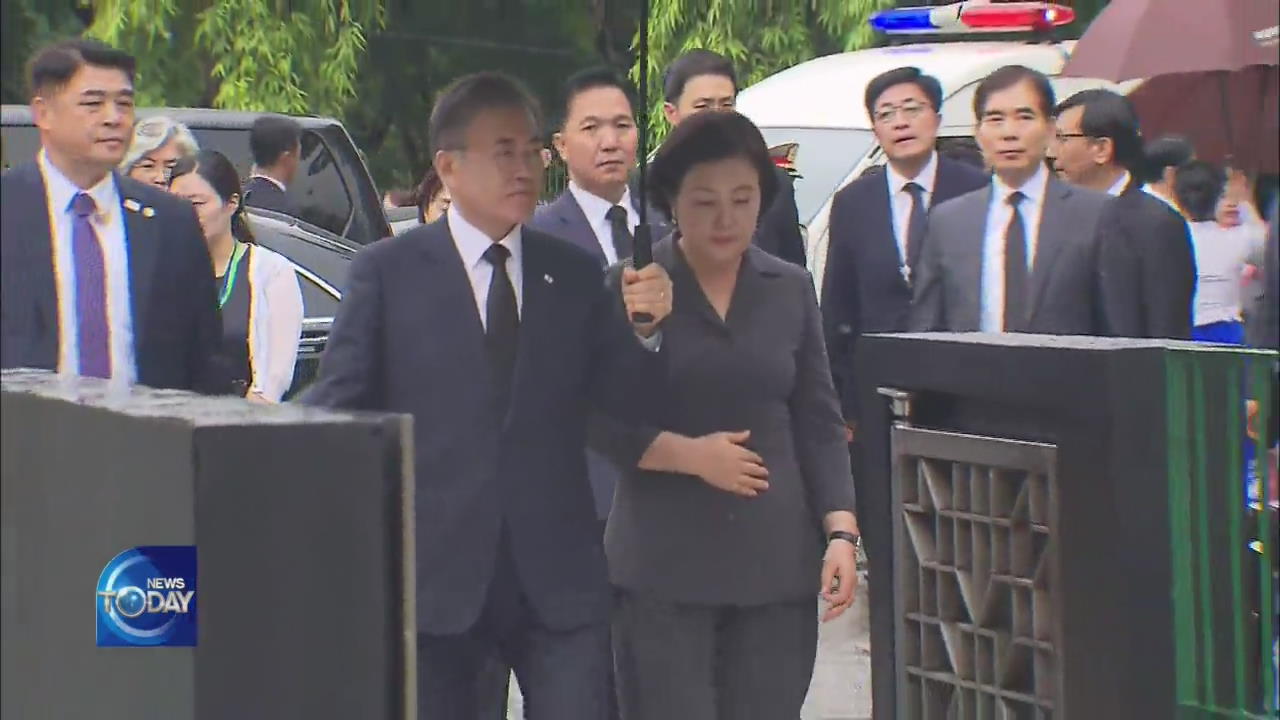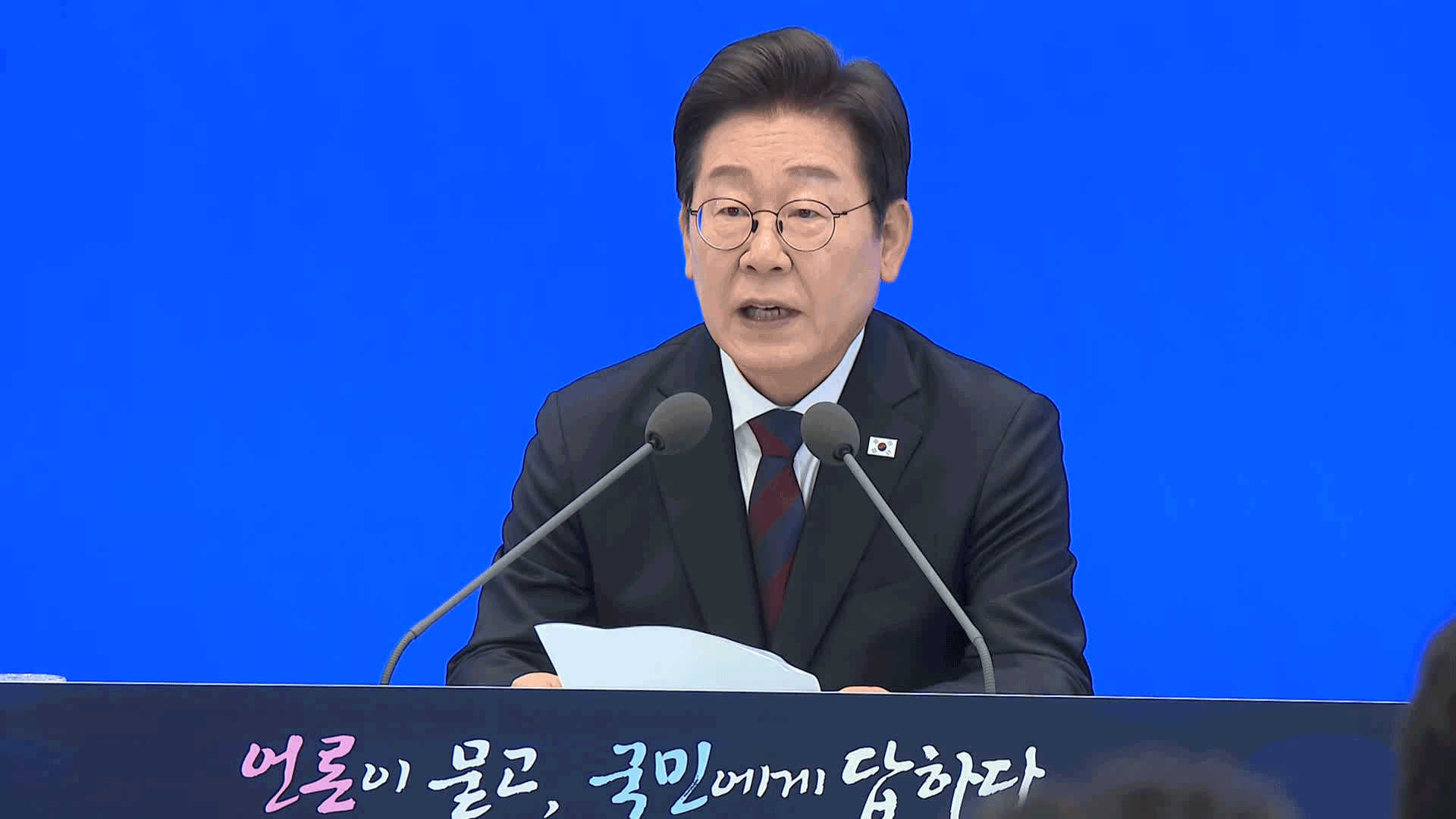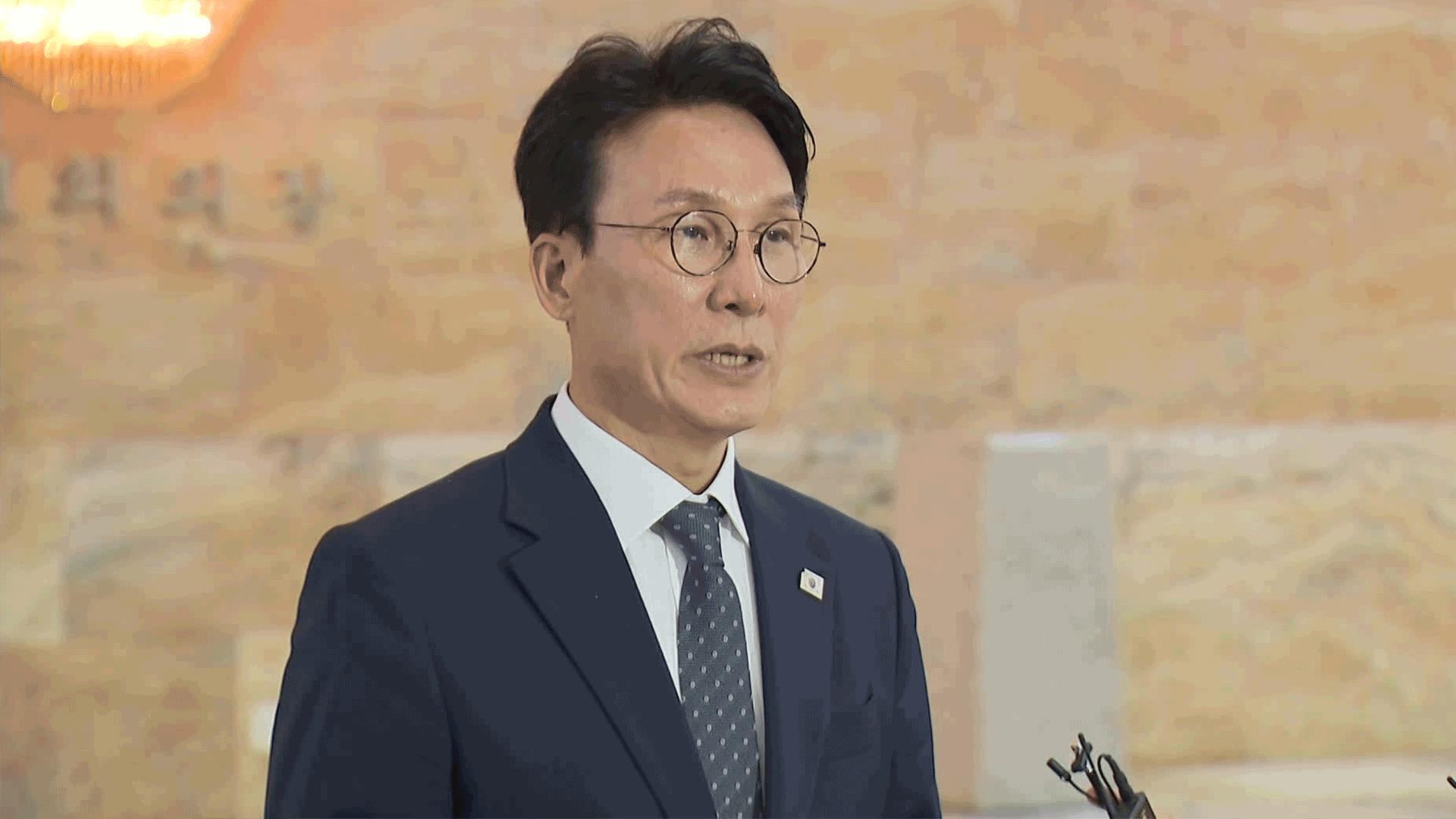DOMESTICALLY PRODUCED HYDROGEN FLUORIDE
입력 2019.09.05 (15:12)
수정 2019.09.05 (16:46)
읽어주기 기능은 크롬기반의
브라우저에서만 사용하실 수 있습니다.
[Anchor Lead]
High purity hydrogen fluoride is one of the three materials that was included in Japan's export restrictions on Korea. It is also the most difficult among the three to replace or produce locally. Samsung Electronics has reportedly begun a partial use of domestically produced hydrogen fluoride in its semiconductors. As such, the localization of semiconductor materials in Korea, is gaining speed faster than expected.
[Pkg]
This firm imports high purity hydrogen fluoride from Japan and delivers it to semiconductor companies in Korea. After Japan imposed restrictions on Korea-bound exports, the firm began to test alternative products made of materials from other countries such as China. It has been found that hydrogen fluoride supplied by this and other domestic firms has been used in the manufacturing of Samsung Electronics' semiconductors since last week. Samsung has begun using the material in some of its products, and plans to gradually expand its use starting from the least sensitive items. The replacement of Japanese imports was initially expected to take up to six months, but in reality it began in a two months' time. SK Hynix also plans to introduce domestically produced hydrogen fluoride soon, while LG Display is already partially using it. The localization process is gaining speed, with two Korean manufacturers of hydrogen fluoride planning to expand their production facilities in the near future. However, it will take some time before the Japanese imports are replaced completely. That's because the existing manufacturing processes are optimized for Japanese materials, which are also cheaper.
[Soundbite] DO HYUN-WOO(NH INVESTMENT & SECURITIES) : "Rather than replacing Japanese products 100 percent, domestic materials will be first used partially in existing processes. Once their quality is recognized, their use will be expanded gradually to the newly developed processes as well."
Meanwhile, Japan has issued a statement saying that Korea's decision to remove Japan from its whitelist was an act of retaliation. However, the Korean government brushed away the accusation by saying that it's simply a measure of strengthening export control on countries that are hard to cooperate with internationally.
High purity hydrogen fluoride is one of the three materials that was included in Japan's export restrictions on Korea. It is also the most difficult among the three to replace or produce locally. Samsung Electronics has reportedly begun a partial use of domestically produced hydrogen fluoride in its semiconductors. As such, the localization of semiconductor materials in Korea, is gaining speed faster than expected.
[Pkg]
This firm imports high purity hydrogen fluoride from Japan and delivers it to semiconductor companies in Korea. After Japan imposed restrictions on Korea-bound exports, the firm began to test alternative products made of materials from other countries such as China. It has been found that hydrogen fluoride supplied by this and other domestic firms has been used in the manufacturing of Samsung Electronics' semiconductors since last week. Samsung has begun using the material in some of its products, and plans to gradually expand its use starting from the least sensitive items. The replacement of Japanese imports was initially expected to take up to six months, but in reality it began in a two months' time. SK Hynix also plans to introduce domestically produced hydrogen fluoride soon, while LG Display is already partially using it. The localization process is gaining speed, with two Korean manufacturers of hydrogen fluoride planning to expand their production facilities in the near future. However, it will take some time before the Japanese imports are replaced completely. That's because the existing manufacturing processes are optimized for Japanese materials, which are also cheaper.
[Soundbite] DO HYUN-WOO(NH INVESTMENT & SECURITIES) : "Rather than replacing Japanese products 100 percent, domestic materials will be first used partially in existing processes. Once their quality is recognized, their use will be expanded gradually to the newly developed processes as well."
Meanwhile, Japan has issued a statement saying that Korea's decision to remove Japan from its whitelist was an act of retaliation. However, the Korean government brushed away the accusation by saying that it's simply a measure of strengthening export control on countries that are hard to cooperate with internationally.
■ 제보하기
▷ 카카오톡 : 'KBS제보' 검색, 채널 추가
▷ 전화 : 02-781-1234, 4444
▷ 이메일 : kbs1234@kbs.co.kr
▷ 유튜브, 네이버, 카카오에서도 KBS뉴스를 구독해주세요!
- DOMESTICALLY PRODUCED HYDROGEN FLUORIDE
-
- 입력 2019-09-05 15:15:46
- 수정2019-09-05 16:46:36

[Anchor Lead]
High purity hydrogen fluoride is one of the three materials that was included in Japan's export restrictions on Korea. It is also the most difficult among the three to replace or produce locally. Samsung Electronics has reportedly begun a partial use of domestically produced hydrogen fluoride in its semiconductors. As such, the localization of semiconductor materials in Korea, is gaining speed faster than expected.
[Pkg]
This firm imports high purity hydrogen fluoride from Japan and delivers it to semiconductor companies in Korea. After Japan imposed restrictions on Korea-bound exports, the firm began to test alternative products made of materials from other countries such as China. It has been found that hydrogen fluoride supplied by this and other domestic firms has been used in the manufacturing of Samsung Electronics' semiconductors since last week. Samsung has begun using the material in some of its products, and plans to gradually expand its use starting from the least sensitive items. The replacement of Japanese imports was initially expected to take up to six months, but in reality it began in a two months' time. SK Hynix also plans to introduce domestically produced hydrogen fluoride soon, while LG Display is already partially using it. The localization process is gaining speed, with two Korean manufacturers of hydrogen fluoride planning to expand their production facilities in the near future. However, it will take some time before the Japanese imports are replaced completely. That's because the existing manufacturing processes are optimized for Japanese materials, which are also cheaper.
[Soundbite] DO HYUN-WOO(NH INVESTMENT & SECURITIES) : "Rather than replacing Japanese products 100 percent, domestic materials will be first used partially in existing processes. Once their quality is recognized, their use will be expanded gradually to the newly developed processes as well."
Meanwhile, Japan has issued a statement saying that Korea's decision to remove Japan from its whitelist was an act of retaliation. However, the Korean government brushed away the accusation by saying that it's simply a measure of strengthening export control on countries that are hard to cooperate with internationally.
High purity hydrogen fluoride is one of the three materials that was included in Japan's export restrictions on Korea. It is also the most difficult among the three to replace or produce locally. Samsung Electronics has reportedly begun a partial use of domestically produced hydrogen fluoride in its semiconductors. As such, the localization of semiconductor materials in Korea, is gaining speed faster than expected.
[Pkg]
This firm imports high purity hydrogen fluoride from Japan and delivers it to semiconductor companies in Korea. After Japan imposed restrictions on Korea-bound exports, the firm began to test alternative products made of materials from other countries such as China. It has been found that hydrogen fluoride supplied by this and other domestic firms has been used in the manufacturing of Samsung Electronics' semiconductors since last week. Samsung has begun using the material in some of its products, and plans to gradually expand its use starting from the least sensitive items. The replacement of Japanese imports was initially expected to take up to six months, but in reality it began in a two months' time. SK Hynix also plans to introduce domestically produced hydrogen fluoride soon, while LG Display is already partially using it. The localization process is gaining speed, with two Korean manufacturers of hydrogen fluoride planning to expand their production facilities in the near future. However, it will take some time before the Japanese imports are replaced completely. That's because the existing manufacturing processes are optimized for Japanese materials, which are also cheaper.
[Soundbite] DO HYUN-WOO(NH INVESTMENT & SECURITIES) : "Rather than replacing Japanese products 100 percent, domestic materials will be first used partially in existing processes. Once their quality is recognized, their use will be expanded gradually to the newly developed processes as well."
Meanwhile, Japan has issued a statement saying that Korea's decision to remove Japan from its whitelist was an act of retaliation. However, the Korean government brushed away the accusation by saying that it's simply a measure of strengthening export control on countries that are hard to cooperate with internationally.
이 기사가 좋으셨다면
-
좋아요
0
-
응원해요
0
-
후속 원해요
0










![[HEADLINE]](https://news.kbs.co.kr/data/news/2019/09/05/4277399_10.jpg)


![[단독] 도이치 주포 “김건희, 내 덕에 떼돈 벌어…22억 원 주문”](/data/news/2025/07/03/20250703_KpuU43.png)
![[단독] “쪽지 얼핏 봤다, 안 받았다”더니…CCTV에선 문건 챙긴 이상민](/data/news/2025/07/03/20250703_Lv3LjI.png)


이 기사에 대한 의견을 남겨주세요.